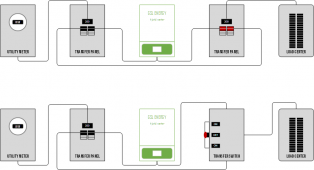fromport
Solar Addict
I re-read your posting a couple of times but i can not make sense of it ;-) [disclaimer: English not my first language]Would a 200amp double throw transfer switch say at the house after the meter not work one position one the power comes from meter to switch to inverter position two it goes grid to main house panel??? Then a simple 200 amp breaker between the inverter and main panel???




